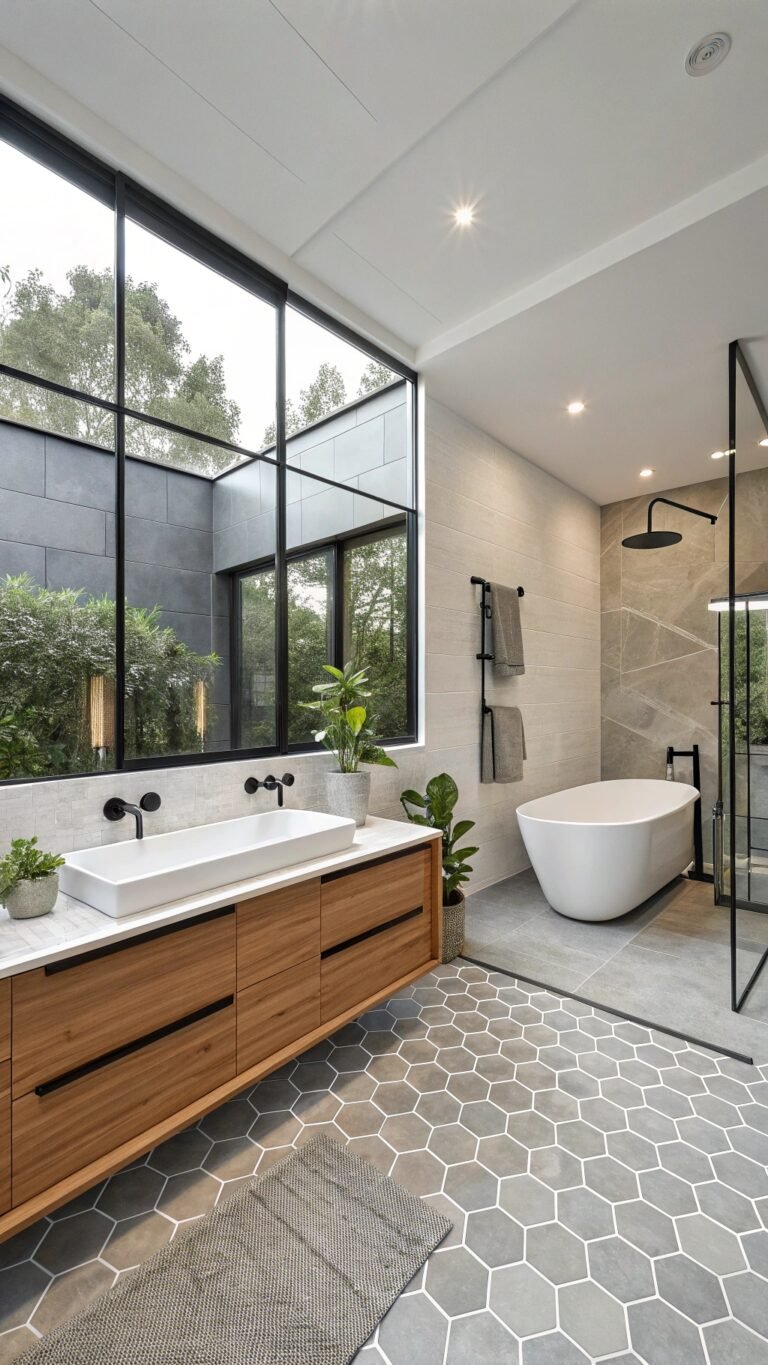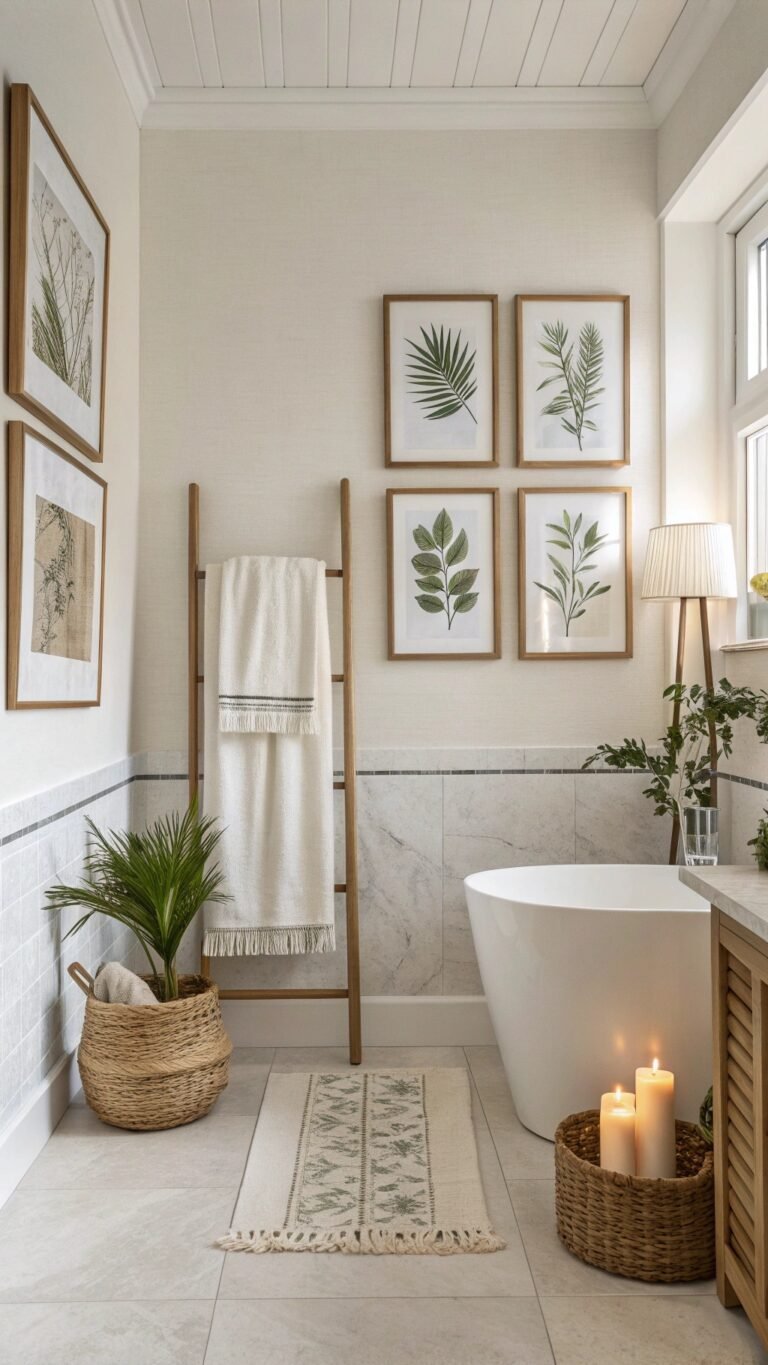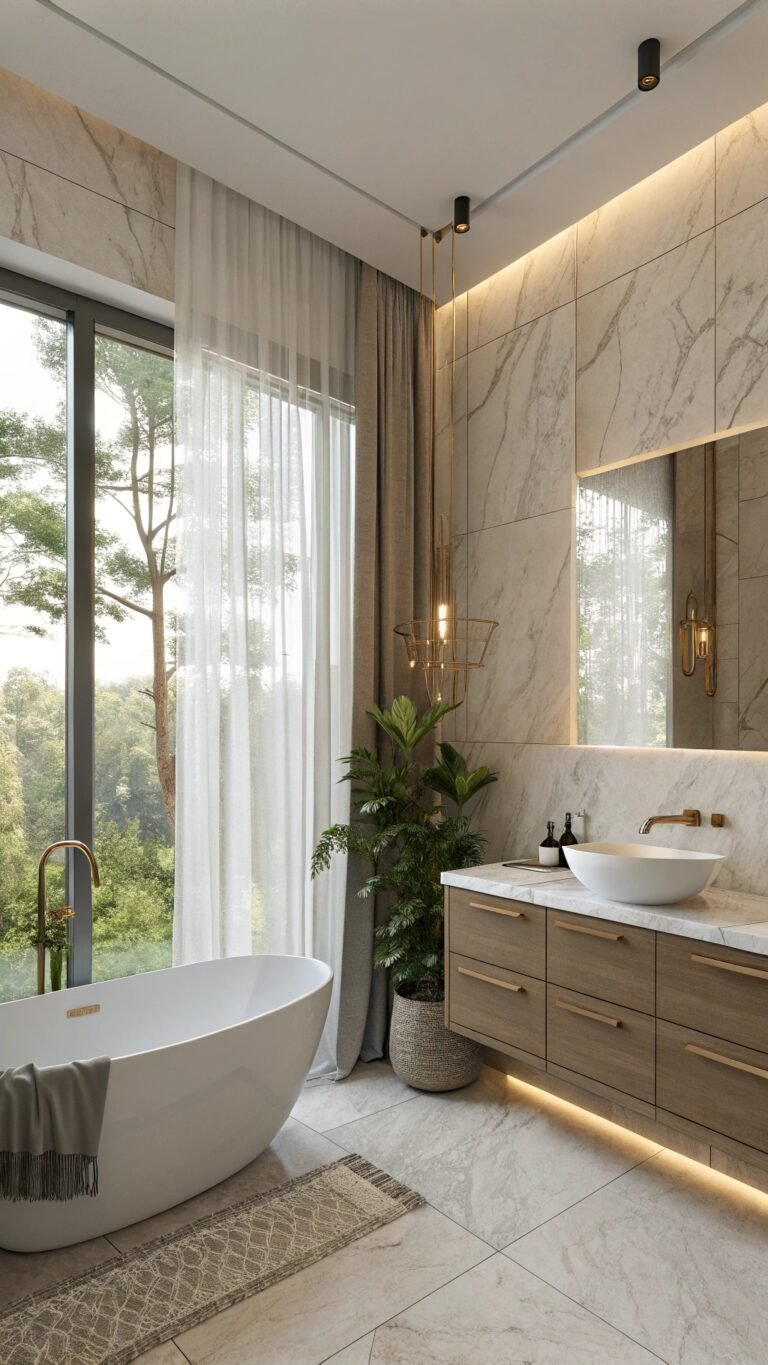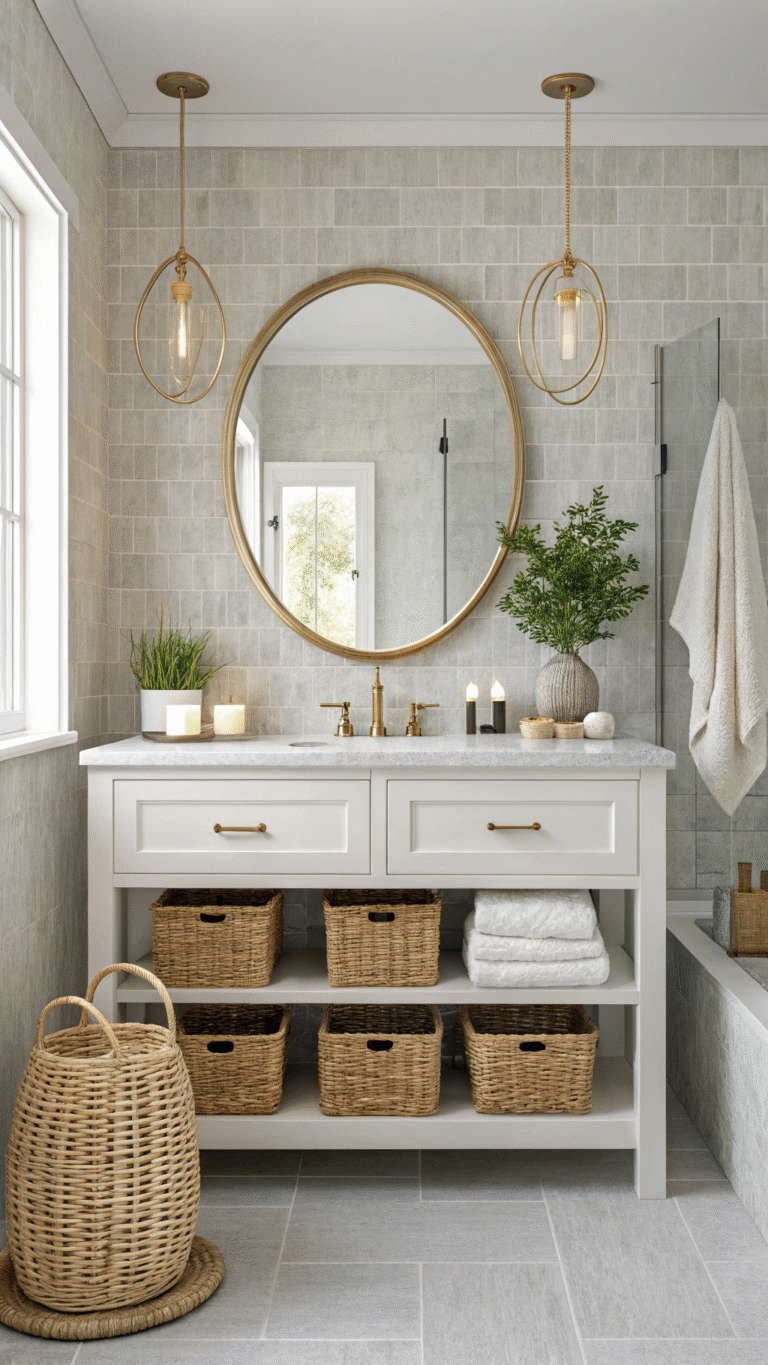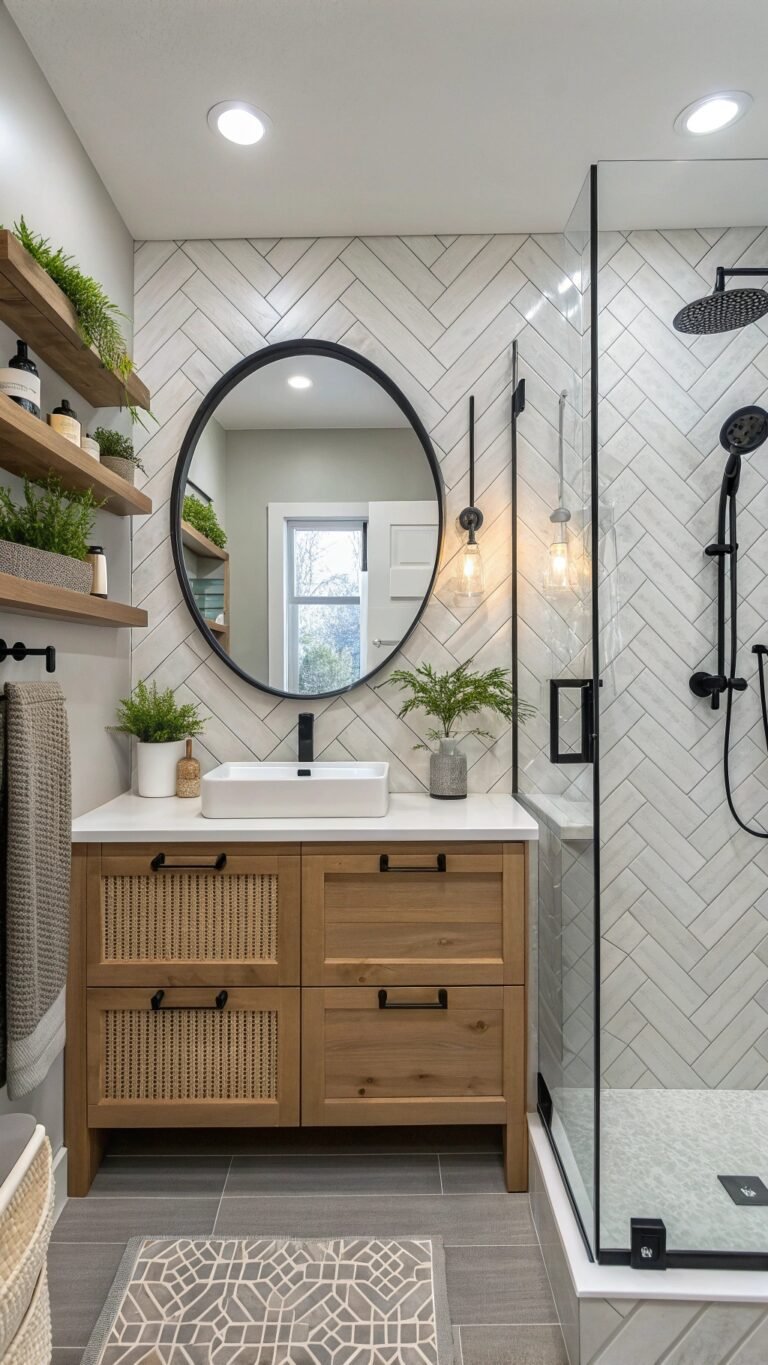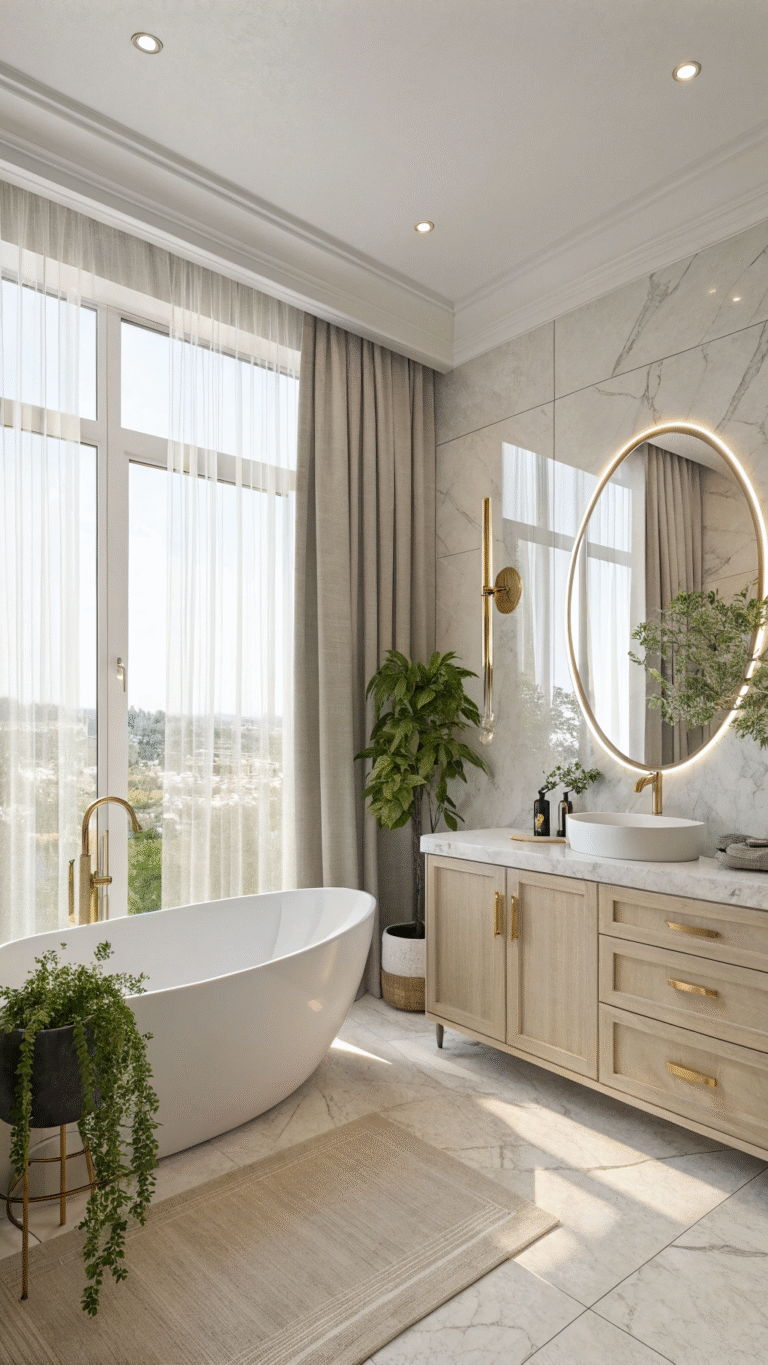Small Bathroom: 13 Smart Ideas That Look Bigger and Live Better
Small bathroom makeovers are booming because tight footprints reward clever planning more than big budgets.
Designers are winning space with wall-hung fixtures, linear drains, mirrored walls, and layered lighting that flatters.
1) Corner Shower with Ultra-Clear Glass
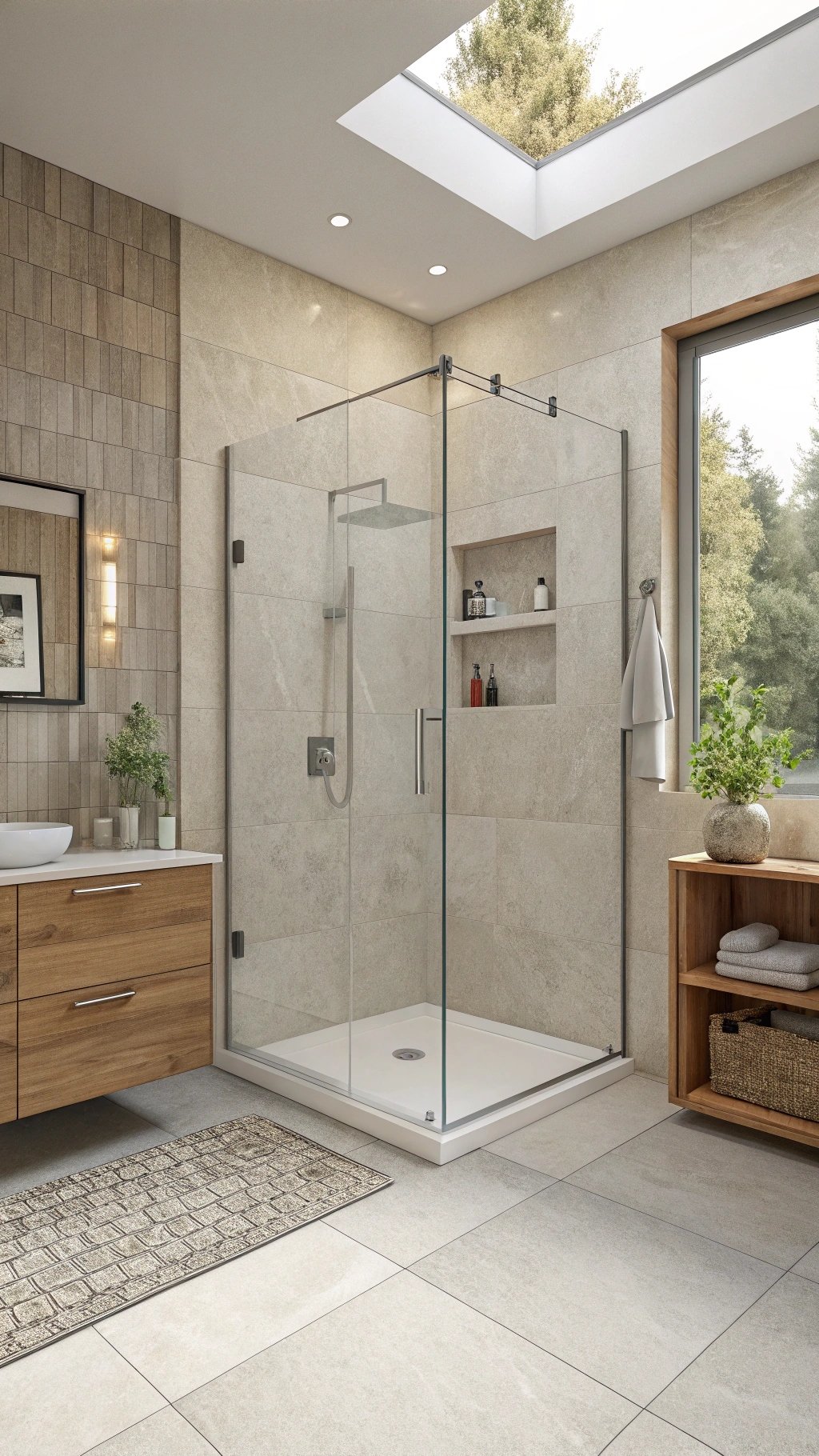
A corner shower instantly opens floor area and sightlines. Use an ultra-clear, frameless enclosure with minimal hardware so the room reads wider.
Keep the shower base curbless where possible, and run the same floor tile into the stall to avoid visual breaks. A single, well-placed niche aligned to grout lines controls bottles without adding bulk or clutter.
What makes something unique:
Push depth with light and reflection: a low iron glass, a pale floor that continues uninterrupted, and a narrow ceiling washer that grazes the shower wall at night.
Place the drain along the back wall to keep the main field clean. The “now you see it, now you don’t” enclosure maximizes every centimeter while staying easy to squeegee.
2) Wall-Hung Vanity and Toilet
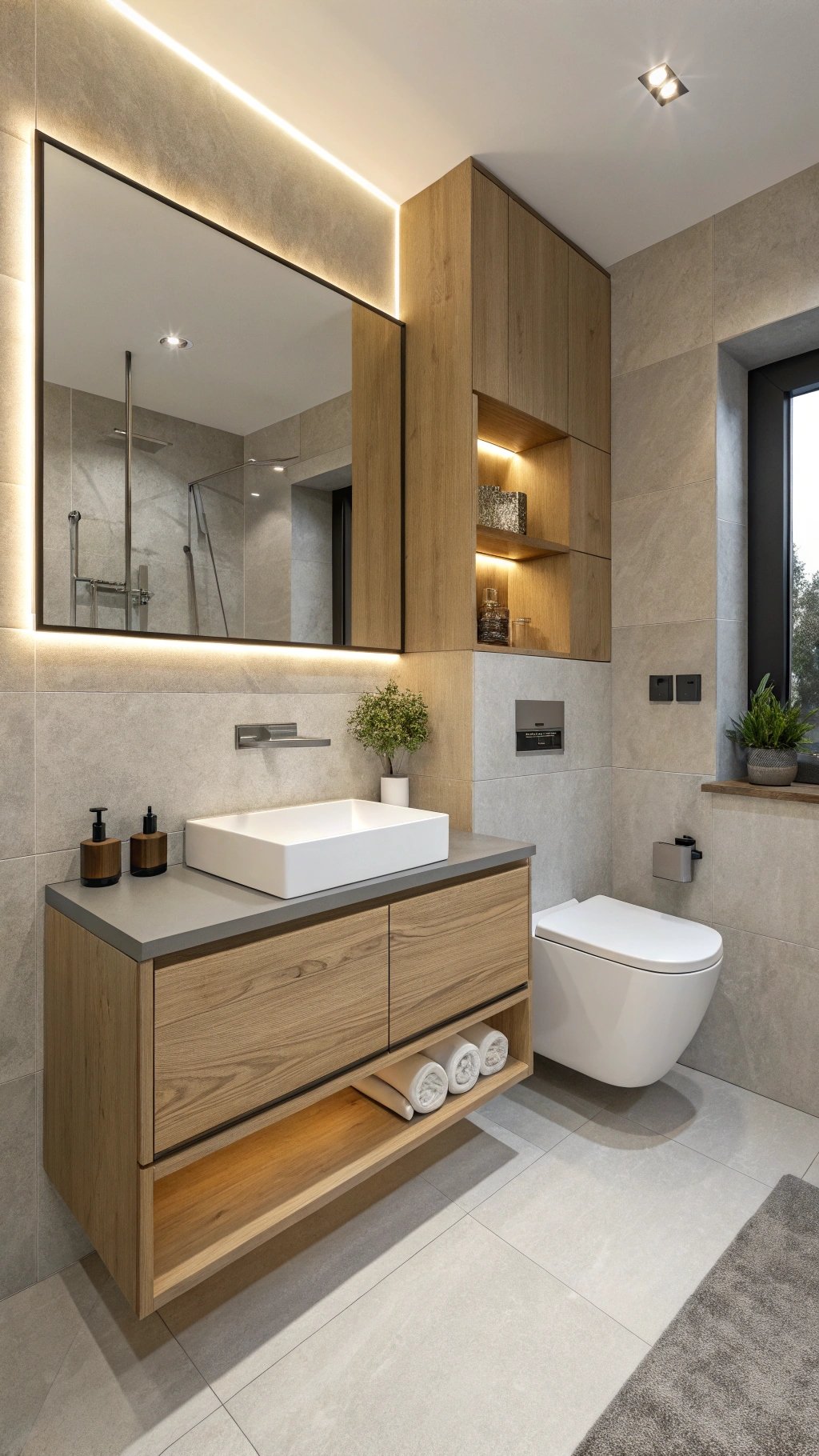
Getting fixtures off the floor makes a compact bath feel larger and speeds cleaning. Choose a floating vanity with two wide drawers for everyday items and a wall-hung toilet with a concealed tank.
Keep the vanity depth modest, add an integrated finger pull, and specify a honed top to hide water spots and fingerprints.
What makes something unique:
Underglow changes everything. A soft toe-kick LED under the vanity guides midnight trips and adds hotel polish without clutter.
Echo the “floating” language by using a slim shelf above the splash zone instead of bulky medicine cabinets. The result looks airy, photographs beautifully, and turns five-minute wipe-downs into a habit you’ll actually keep.
3) Light Color Drench
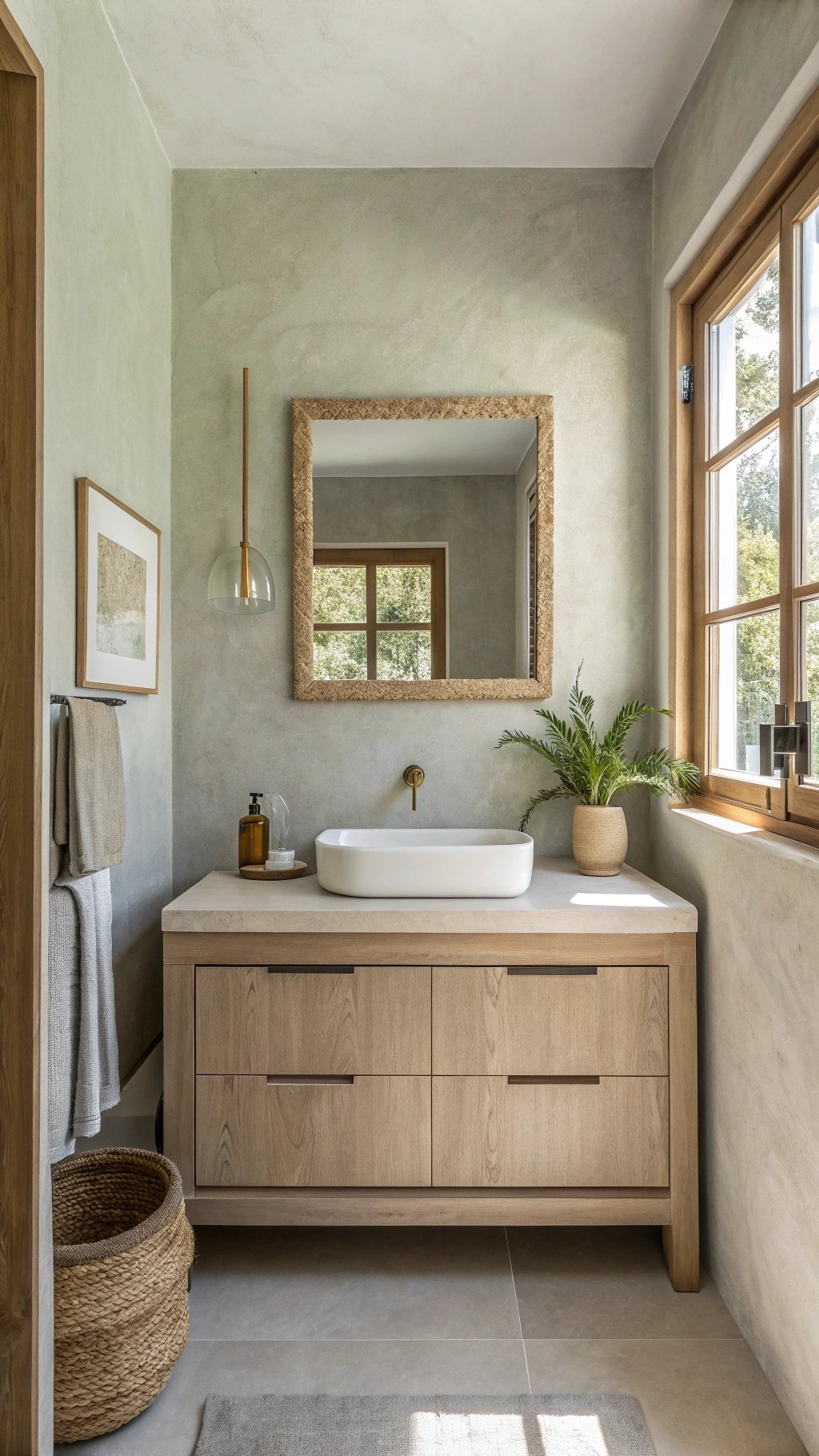
One pale hue from door to ceiling dissolves edges and makes a small bathroom read bigger. Use washable satin or microcement walls in warm white, mushroom, or pale sage.
Match trim, doors, and even the radiator to the wall tone so the eye isn’t chopping the room into pieces. Keep metals satin, not shiny.
What makes something unique:
Create depth with sheen, not contrast: matte walls, satin vanity fronts, and a honed stone top. Add a single oak frame or ledge to warm the palette, and repeat that wood once more in a stool or tray.
The discipline delivers quiet luxury, lowers maintenance, and ensures the room glows softly at every hour.
4) True Wet Room with Linear Drain
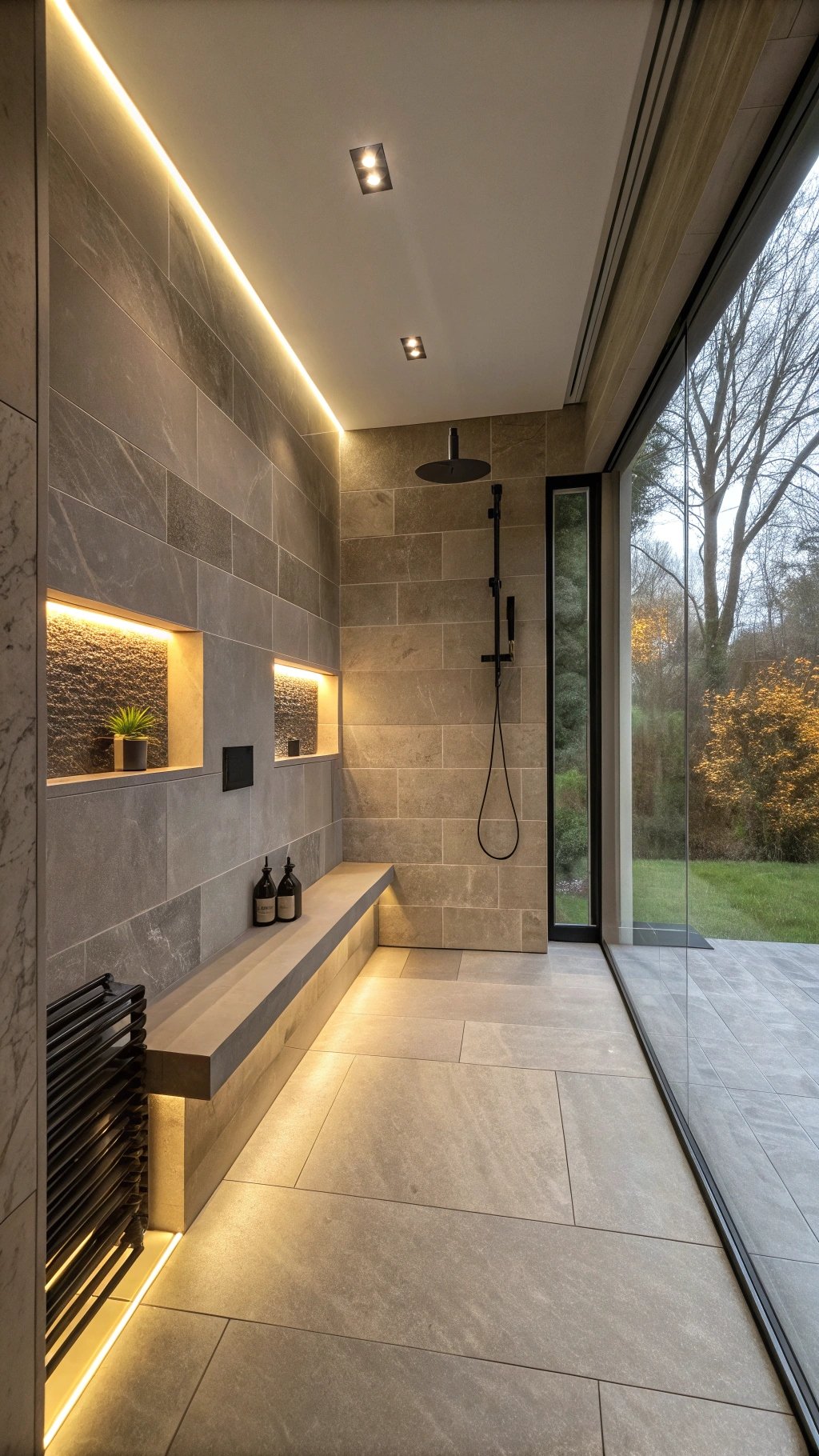
Eliminating thresholds frees up movement and stretches the footprint visually. Pitch the entire floor slightly toward a wall-edge linear drain and use a single fixed glass panel (or none) to contain spray.
Large-format tiles minimize grout and cleaning time. A hand shower plus a rain head covers both speed showers and spa days.
What makes something unique:
Run the floor tile up the bench face and curb (if any) for a continuous read, and tuck an LED strip under the bench for a hovering effect at night.
Color-match grout to tile, and use a matte anti-slip finish. The room feels architectural, accessible, and deceptively spacious.
5) Recessed Niches and Ledges
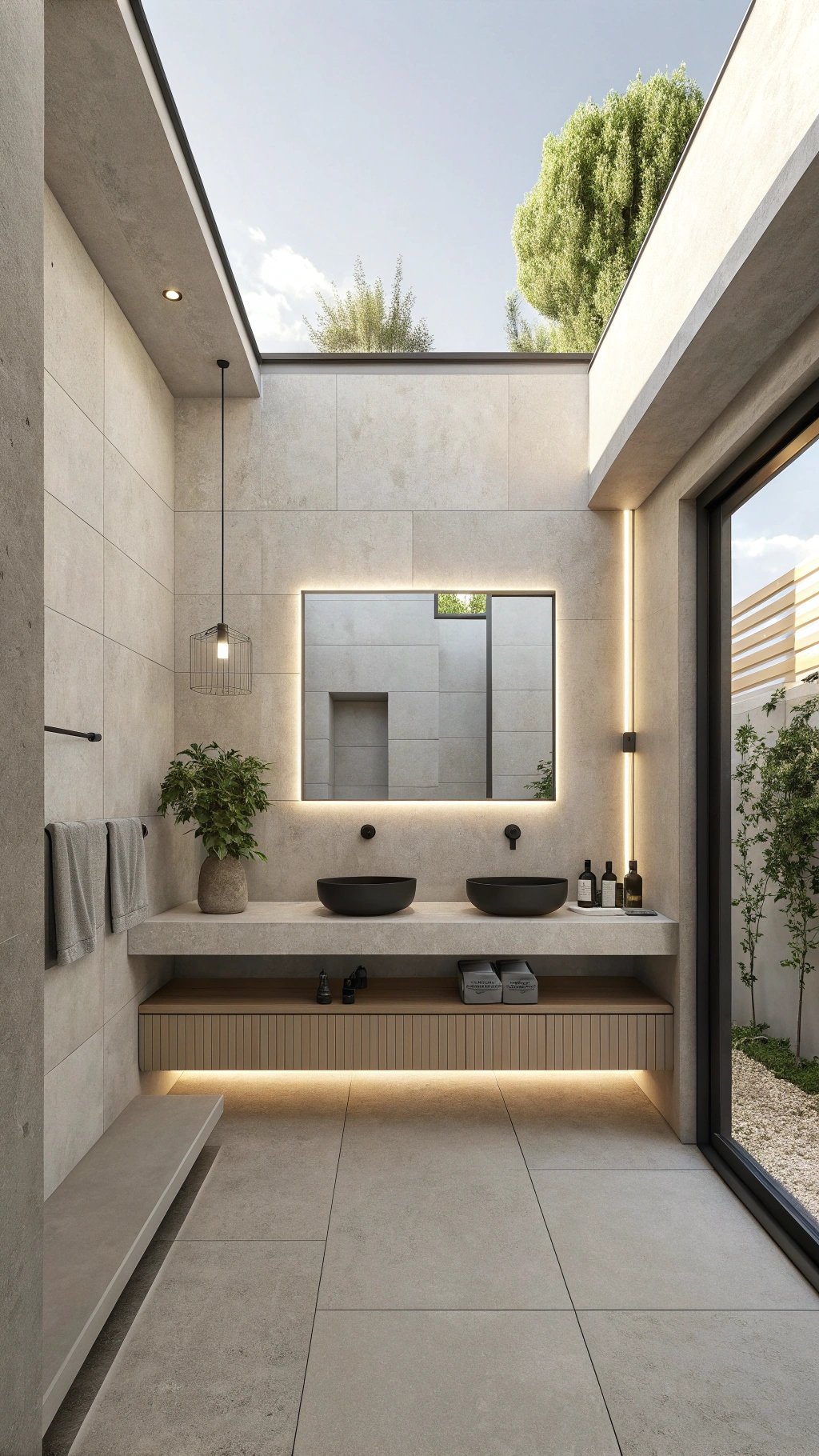
Small bathrooms can’t spare counter space. Carve storage into walls: one niche in the shower, one at face height beside the mirror, and a long, shallow stone ledge above the splash zone.
Ledges corral daily items while keeping surfaces wipe-clean. Finish niche interiors in stone or microcement to avoid busy grout lines.
What makes something unique:
Edge-light a single niche with a low-watt strip for nighttime glow and size another precisely for tissue boxes or diffusers.
Cap ledges with the same stone as the counter to visually stitch the elevation. Architecture becomes the organizer, so the room stays calm and resets fast after guests.
6) Mirror Wall with Bronze Tint
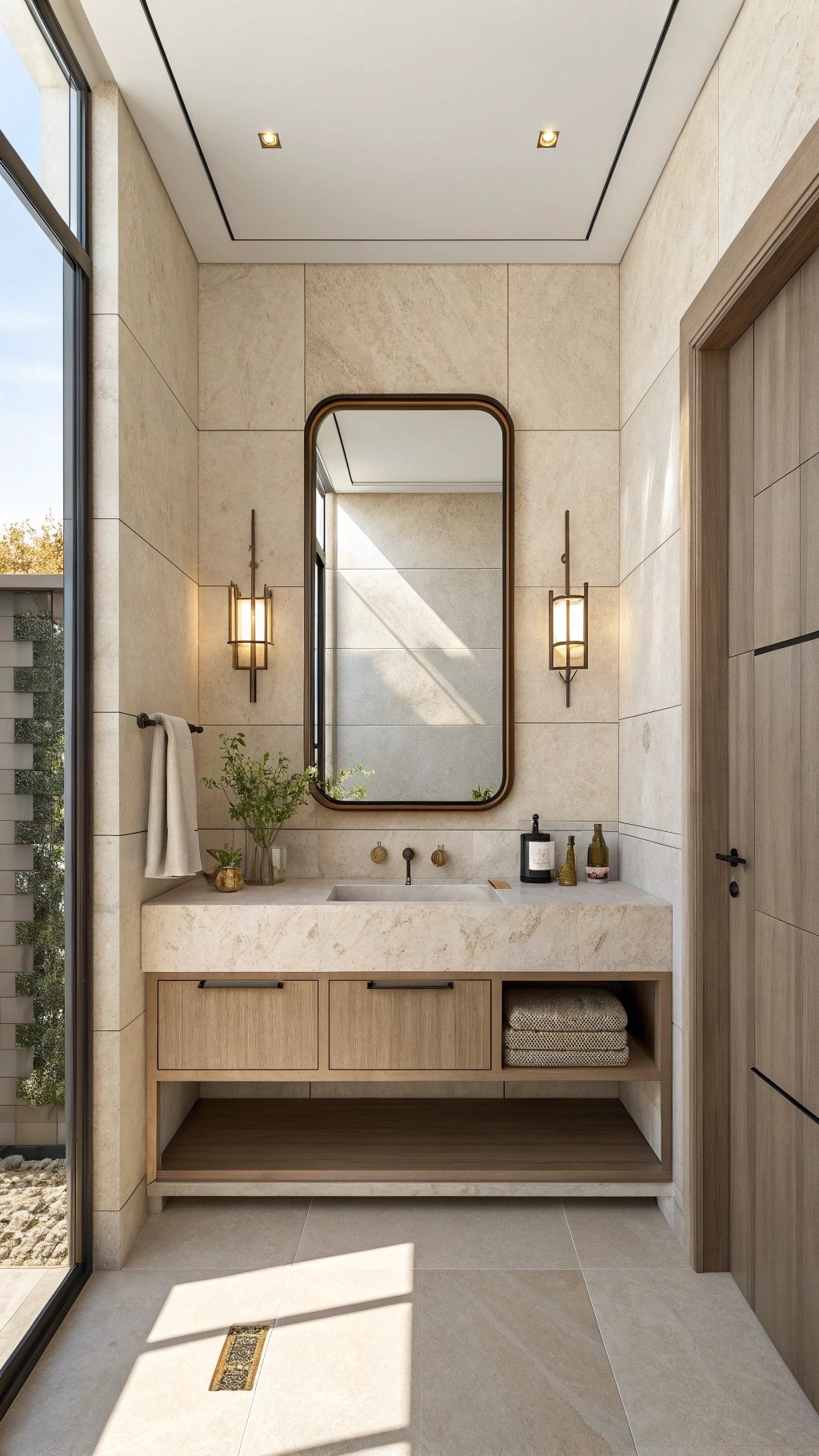
Mirrors make compact rooms feel wider, but a subtle bronze tint softens faces and cuts glare. Run the mirror wall-to-wall with a slim shelf lip at the bottom to catch small items.
Pair with sconces mounted at cheek height for shadow-free grooming. Anti-fog film keeps clarity after hot showers.
What makes something unique:
Backlight the mirror on a dimmer to double as a nightlight and echo the tint in a single tray or frame.
This trick lets you keep tile and paint quieter, improving maintenance while making the room bright by day and cozy by night.
7) Sliding Door or Pocket Door
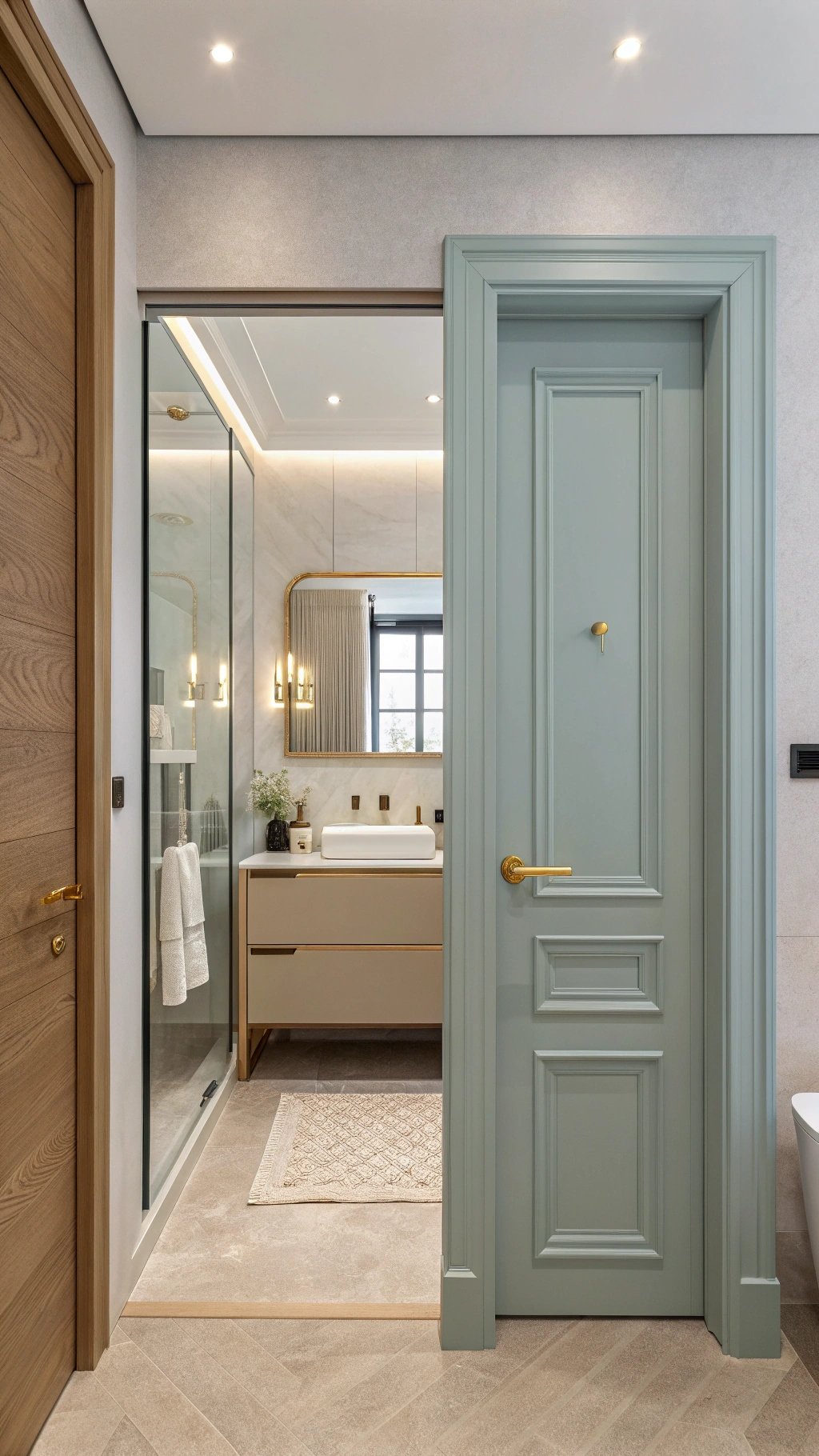
Swing doors eat precious floor area. A pocket or barn-style slider clears the circulation zone and gives you room for a longer vanity or wider shower.
Choose quiet, soft-close hardware and a solid core to keep sound down. Align the handle finish with your taps and pulls for cohesion.
What makes something unique:
Use the door face as design: color-drench it to match walls for a seamless envelope, or clad it in thin oak planks to add warmth and vertical rhythm.
A flush pull keeps profiles slim. You gain usable square centimeters without moving a wall or touching plumbing.
8) Vertical Lines & Fluted Details
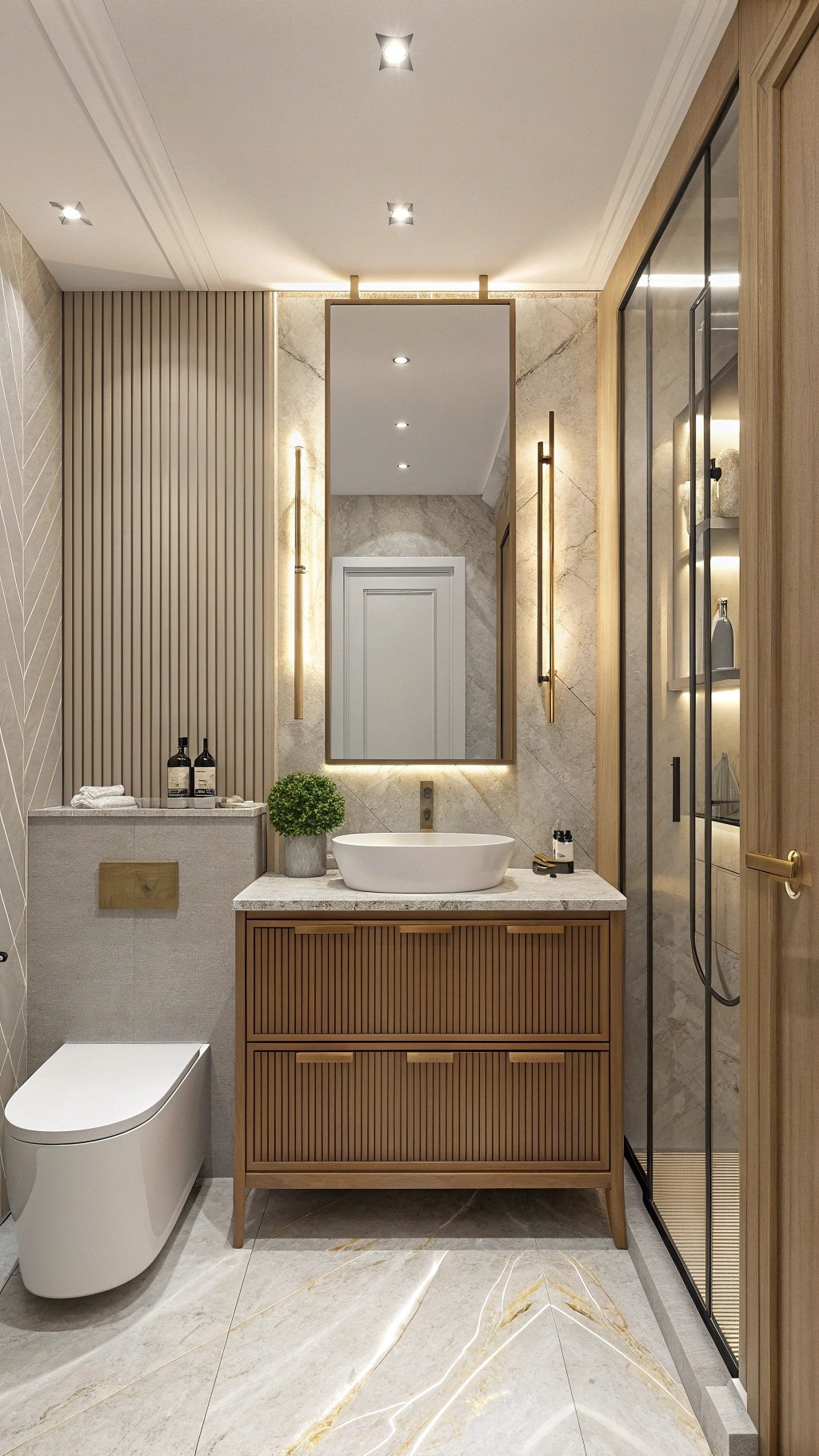
Vertical rhythm tricks the eye upward. Fluted vanity fronts, ribbed glass screens, or narrow beadboard half-walls add texture without crowding a small plan.
Keep profiles slim and finishes matte so shadows, not shine, carry the detail. Pair with a simple bullnose stone edge to reinforce softness and safety.
What makes something unique:
Repeat the vertical cue three times—vanity, shower glass, and a slim panel behind the WC—so the gesture reads intentional.
Add a ceiling graze light to animate the texture at night. The space feels taller and more crafted without sacrificing wipe-clean simplicity.
9) Compact Soaking Tub
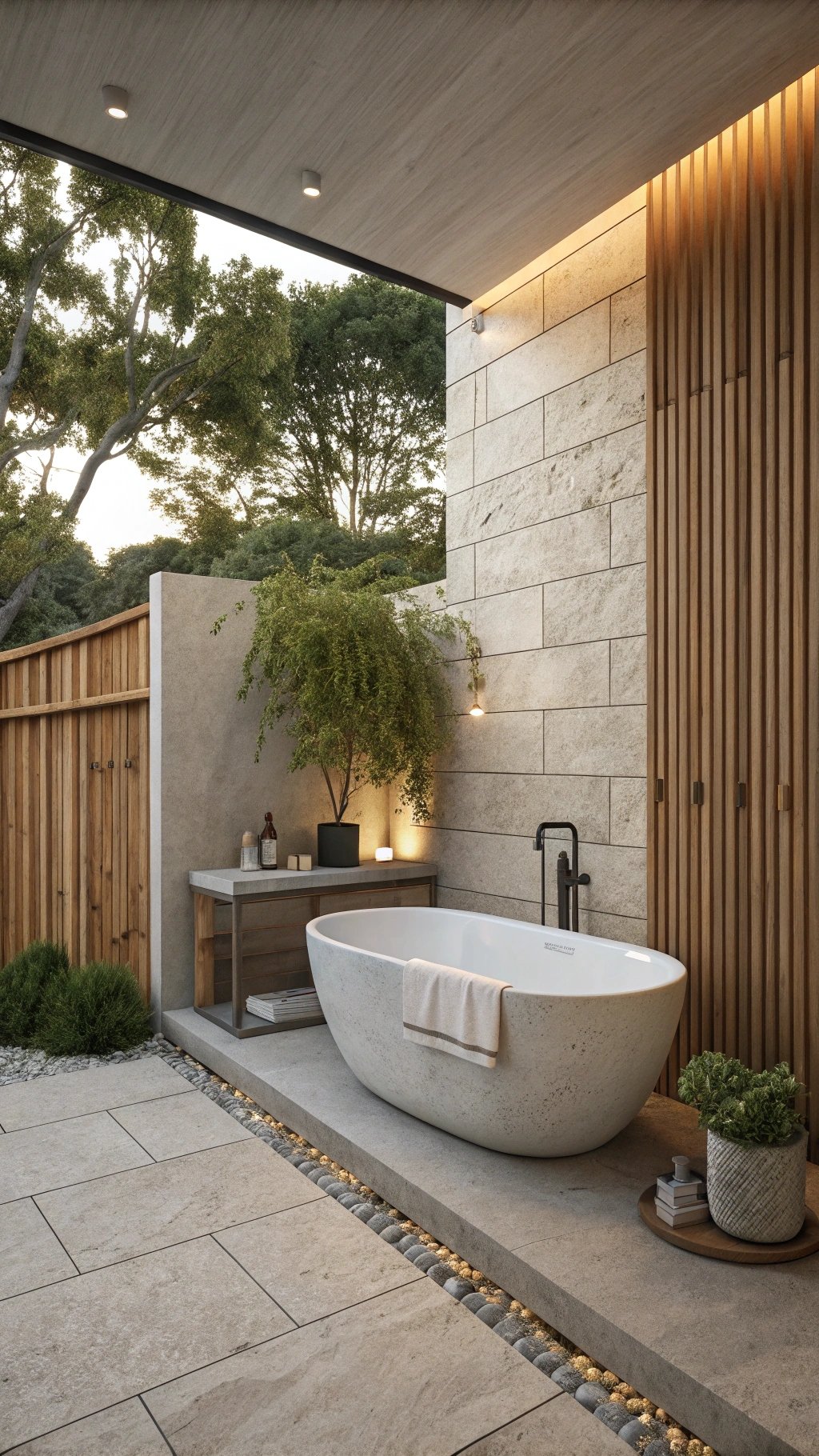
When soaking matters, choose a short, deep tub instead of a long shallow one. Japanese-style forms fit tight footprints and offer full-body immersion seated.
Place the filler within reach from outside the tub and keep at least 20–25 cm clearance behind for cleaning. A small shelf holds a book and towel.
What makes something unique:
Frame the tub with limewash or a slatted cedar panel for texture, then aim a dimmable picture light at a petite artwork opposite.
Curves reflect daylight through the room, while evening scenes feel spa-level. The ritual of a deep soak doesn’t require a giant bathroom—just smart proportions.
10) Lighting Layers that Work
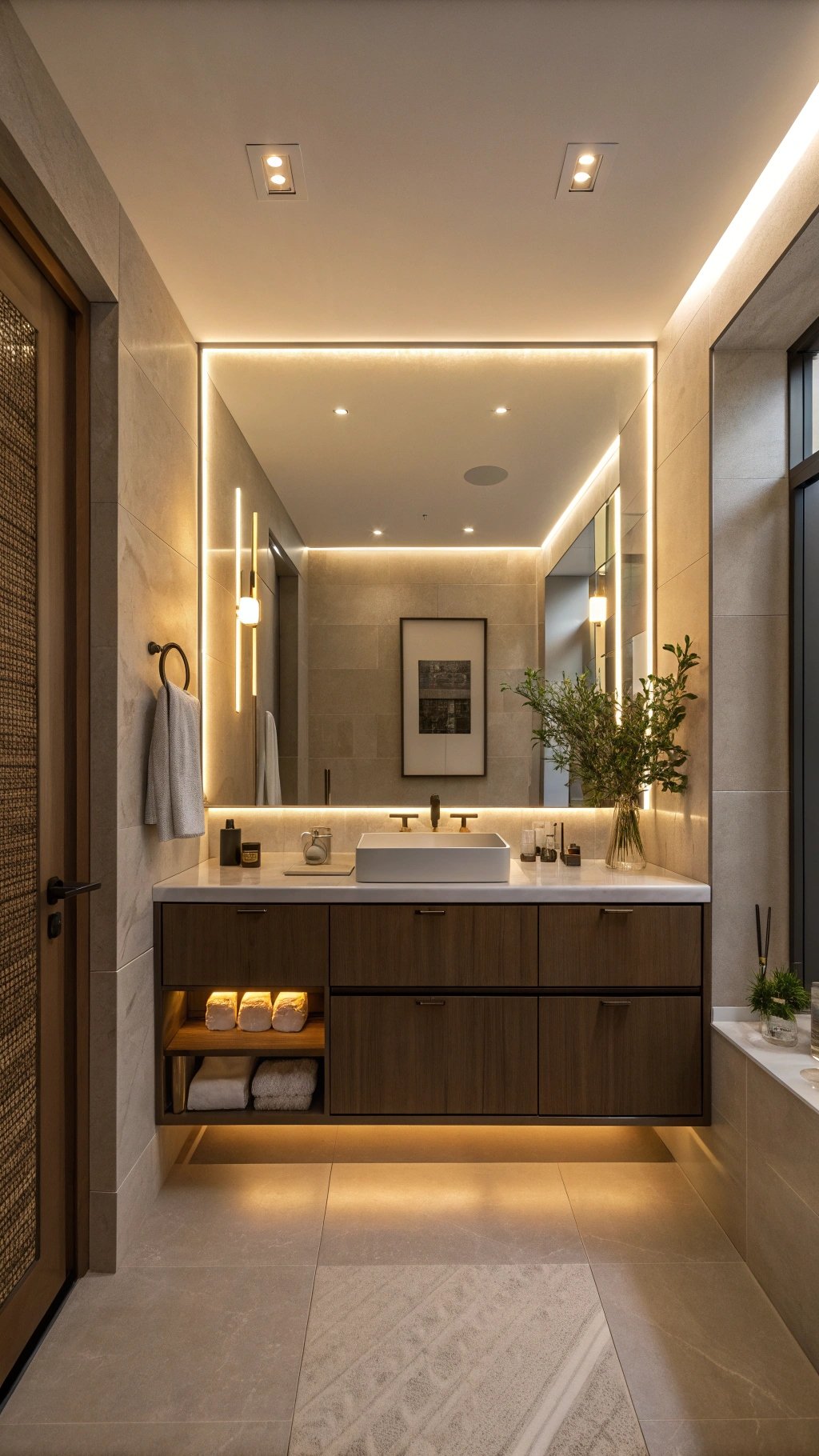
Great light enlarges small rooms. Combine ambient (slim ceiling fixture), task (face-height sconces), and accent (niche or under-vanity LED).
Use high-CRI 2700–3000K lamps to flatter skin and stone. Put “Morning,” “Spa,” and “Night” scenes on dimmers so brightness shifts with routine.
What makes something unique:
Hide LED tape above the mirror or tall wall to graze the ceiling, visually raising height. Add toe-kick LEDs for safe midnight paths. When light becomes décor, you can keep objects to a minimum and still feel finished, calm, and camera-ready.
11) Pattern with Large-Format or Checkerboard Floors
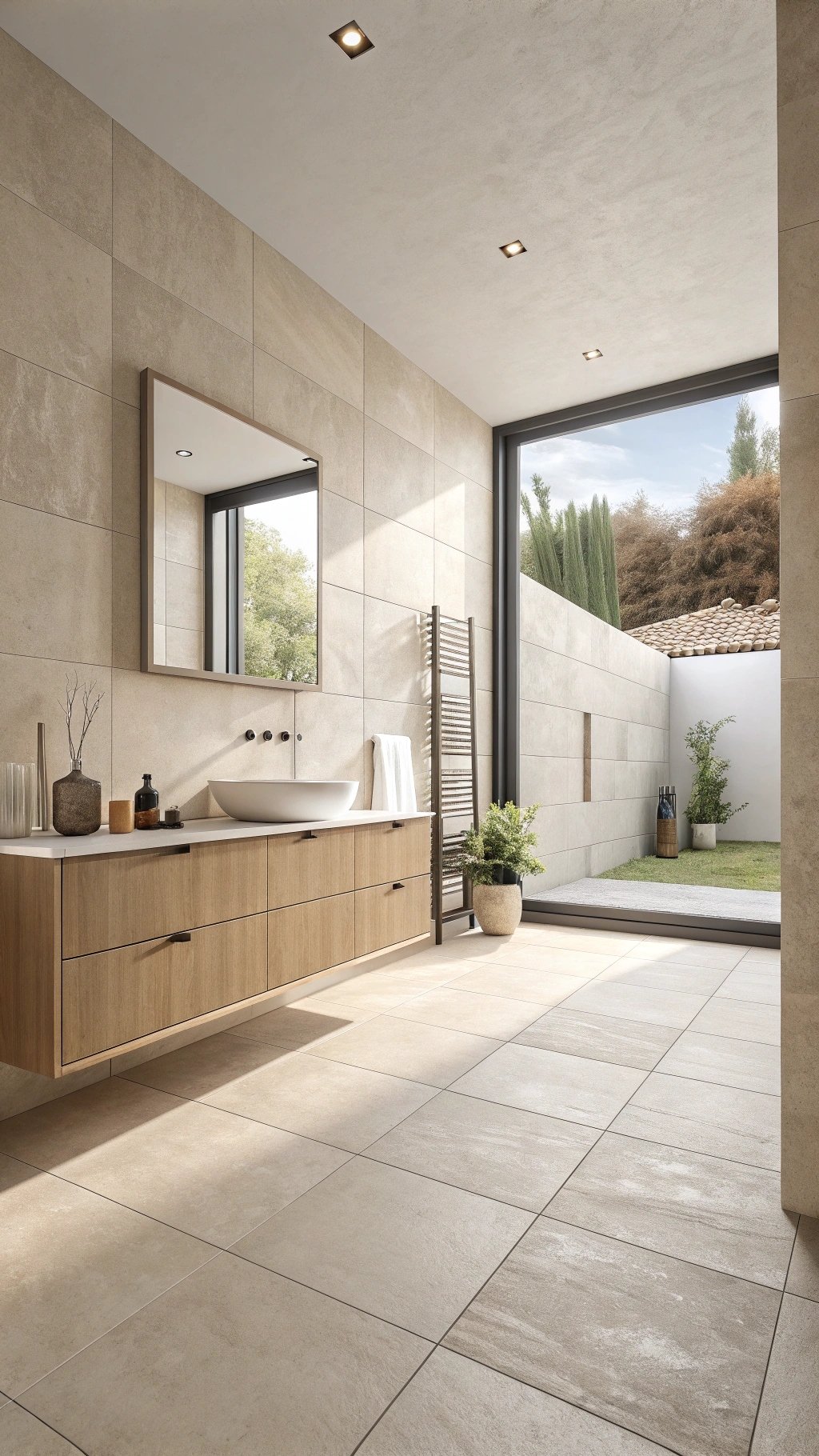
Large-format porcelain reduces grout and makes the floor read like one surface. Prefer a quiet, low-sheen finish that hides drips.
If you want character, try a small-scale checkerboard in soft neutrals. Run boards or tiles lengthwise to elongate the room and keep wall materials simple to avoid visual battles.
What makes something unique:
Frame a micro-rug effect by bordering the floor under the vanity or tub—just a single course rotated or tinted slightly.
The floor becomes the star without shouting. Maintenance stays easy, and the camera catches subtle craft instead of clutter.
12) Laundry-Within-Bath, Disguised
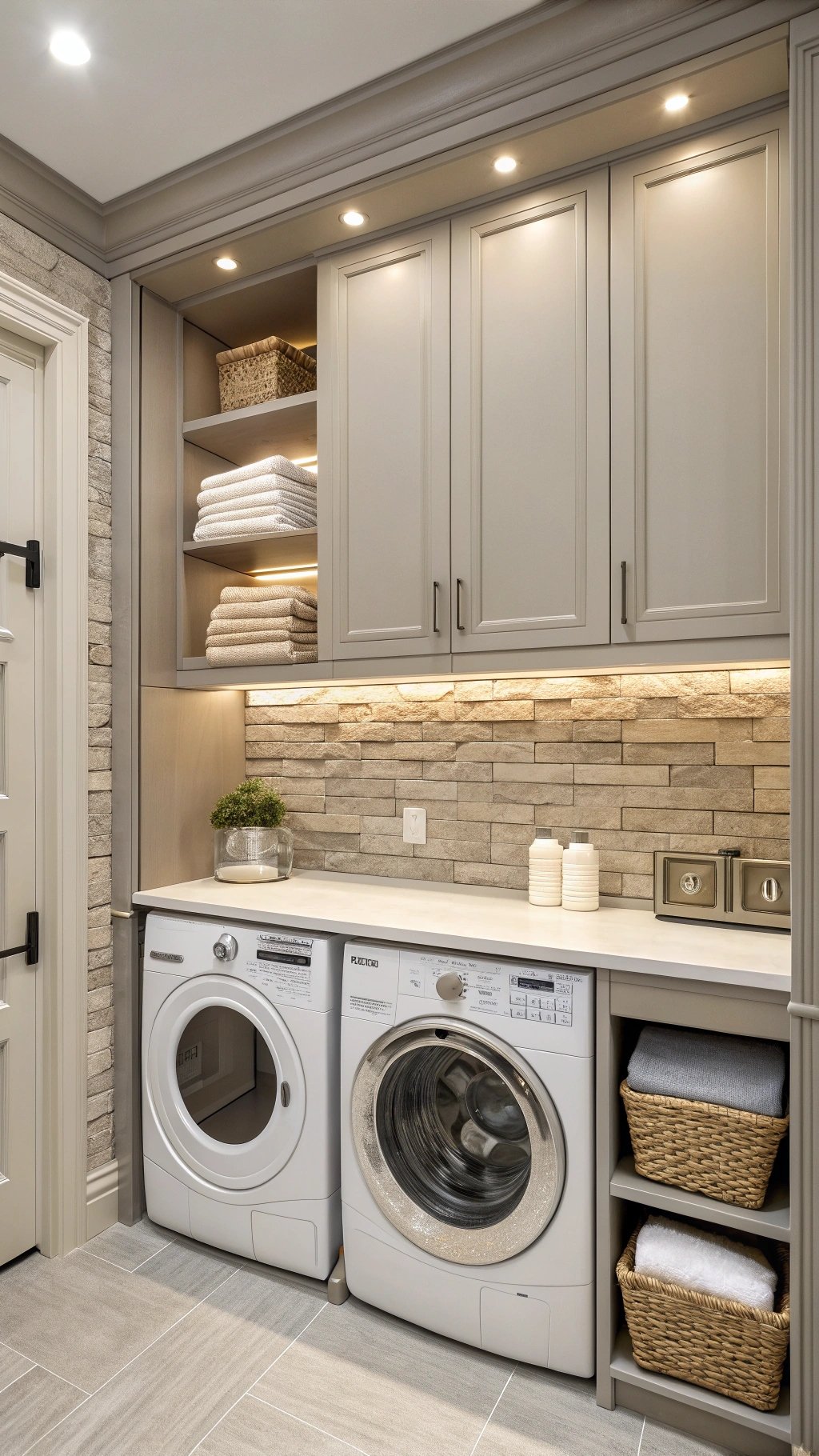
When space is scarce, tuck a stacked washer/dryer behind paneled doors inside the bathroom. Add a folding shelf above and a pull-out rail for drip-dry items.
A boosted exhaust fan and door undercut keep humidity balanced. Match panels to the vanity so the niche reads as one built-in.
What makes something unique:
Line the niche with the same stone as the counter and add a magnetic task light under the folding shelf for spot work.
When closed, the utility zone disappears; when open, it’s genuinely practical. You gain apartment-level convenience without sacrificing spa calm.
13) Sustainable, Low-Maintenance Surfaces
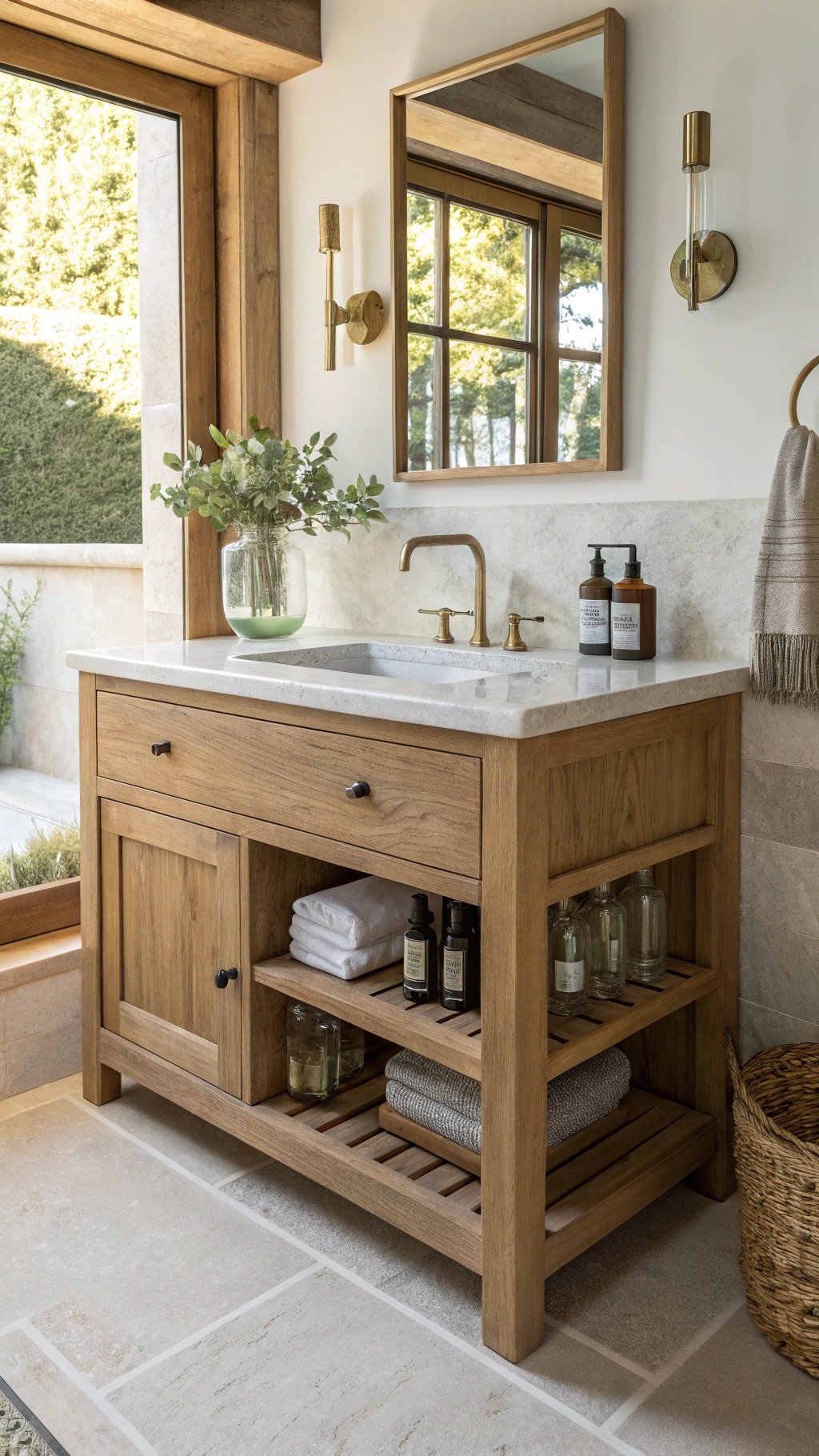
Eco choices now look luxe and keep small baths easy to clean: FSC wood vanities, low/zero-VOC finishes, sintered stone that resists stains and heat, and water-saving taps with satisfying flow.
Solid metals patina rather than chip, and vintage mirrors add history without waste.
What makes something unique:
Let the story show. Use a reclaimed shelf with visible joinery, labeled refill bottles in a niche, and a brass tap that will age gracefully.
Pair with high-CRI LEDs so tones stay honest. The room gets better every year—longevity as the ultimate finish for a small bathroom.
Quick Tips for Small Bathrooms
Pick one hero (curbless shower, floating vanity, or mirror wall) and echo it twice.
Favor drawers over doors for daily ergonomics.
Keep finishes matte to hide water spots and fingerprints.

